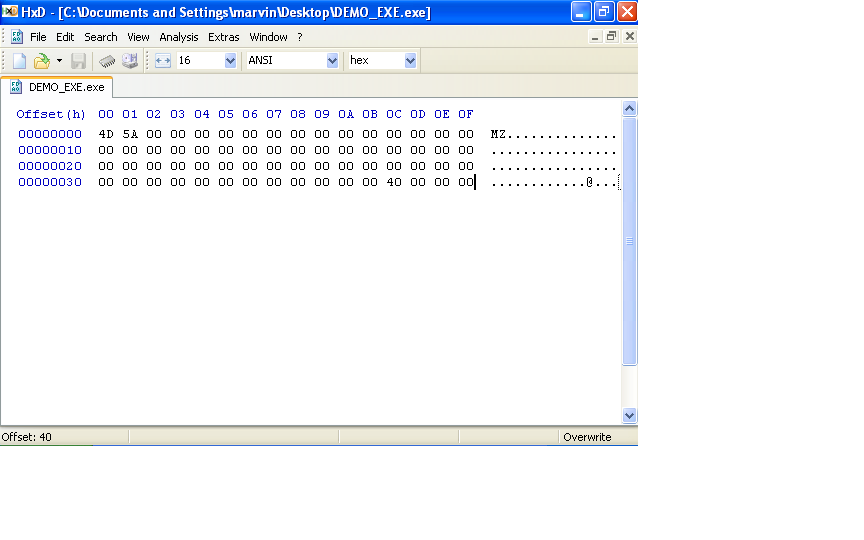


PMODE\W v1.33 DOS extender – Copyright 1994-1.I mentioned 1980s… here are the signatures for these: !Library created by Axialis IconWorkshop.
 PMODE/W v1.33 DOS extender – Copyright 1994-1. dPMODE/W v1.33 DOS extender – Copyright 1994-1. This program must be run under Microsoft Windows. !This program cannot be run in a DOS session. !This program requires Microsoft Windows. !This program cannot be run in DOS mode. There are tones of strings and signatures that I have not seen for many years, many I never heard of, and many referenced technologies that are long gone. And even if some of them are old malware, they are not important for today’s standard anyway.Īfter I clustered my collection I was quite amazed. We can create yara sigs to catch these old goodware files looking at signatures that were common back then, but today are no longer used. Being able to recognize them is one way to cluster them into a bucket that we can… simply discard. On many inspected systems, servers, mirrors. You may ask why would we want to even look at it? Well, these files are still out there. Analysing them en masse gives us a rare insight into the ‘state of the MZ stub’ from that time… Many of these files go as early as 1980s. If you do this you will be able to write genuine high speed software that runs correctly on all 32 and 64 bit versions of Windows up to Win7 64 bit and your applications will be far more powerful than out of date junk or incompatible architecture can deliver.Analysing a large corpora of clean files is fun. If you bother to learn the modern stuff you use the Windows API functions instead of antique DOS interrupts, you select instructions based on privilege and you use the Intel ABI (Application Binary Interface) so that your register usage is properly compatible with the Windows operating system. Even the 32 bit code in it is non Intel / Microsoft complaint and uses an unreliable architecture to produce poor quality binaries.
PMODE/W v1.33 DOS extender – Copyright 1994-1. dPMODE/W v1.33 DOS extender – Copyright 1994-1. This program must be run under Microsoft Windows. !This program cannot be run in a DOS session. !This program requires Microsoft Windows. !This program cannot be run in DOS mode. There are tones of strings and signatures that I have not seen for many years, many I never heard of, and many referenced technologies that are long gone. And even if some of them are old malware, they are not important for today’s standard anyway.Īfter I clustered my collection I was quite amazed. We can create yara sigs to catch these old goodware files looking at signatures that were common back then, but today are no longer used. Being able to recognize them is one way to cluster them into a bucket that we can… simply discard. On many inspected systems, servers, mirrors. You may ask why would we want to even look at it? Well, these files are still out there. Analysing them en masse gives us a rare insight into the ‘state of the MZ stub’ from that time… Many of these files go as early as 1980s. If you do this you will be able to write genuine high speed software that runs correctly on all 32 and 64 bit versions of Windows up to Win7 64 bit and your applications will be far more powerful than out of date junk or incompatible architecture can deliver.Analysing a large corpora of clean files is fun. If you bother to learn the modern stuff you use the Windows API functions instead of antique DOS interrupts, you select instructions based on privilege and you use the Intel ABI (Application Binary Interface) so that your register usage is properly compatible with the Windows operating system. Even the 32 bit code in it is non Intel / Microsoft complaint and uses an unreliable architecture to produce poor quality binaries. 
MS-DOS is an antique architecture that depends on a modified 16 bit addressing system that uses segment/offset architecture which is completely incompatible with later protected mode addressing.Ħ4k versus 4 gigabyte address range is one of the main reasons why MS-DOS was left behind long ago.Īs far as the Irvine book, do yourself a favour and find another use for it, perhaps a doorstop, packaging for parcels if you tear out the pages and crumple them but do not waste you time or ours on out of date junk. It was replaced first by 16 bit Windows, then from Win95 onwards it was replaced by 32 bit Windows and as of 64 bit Windows, it is not even supported by Windows Virtual Machines. The problem with using MS-DOS programming techniques is the 16 bit system was redundant back in the early 1990s.








 0 kommentar(er)
0 kommentar(er)
